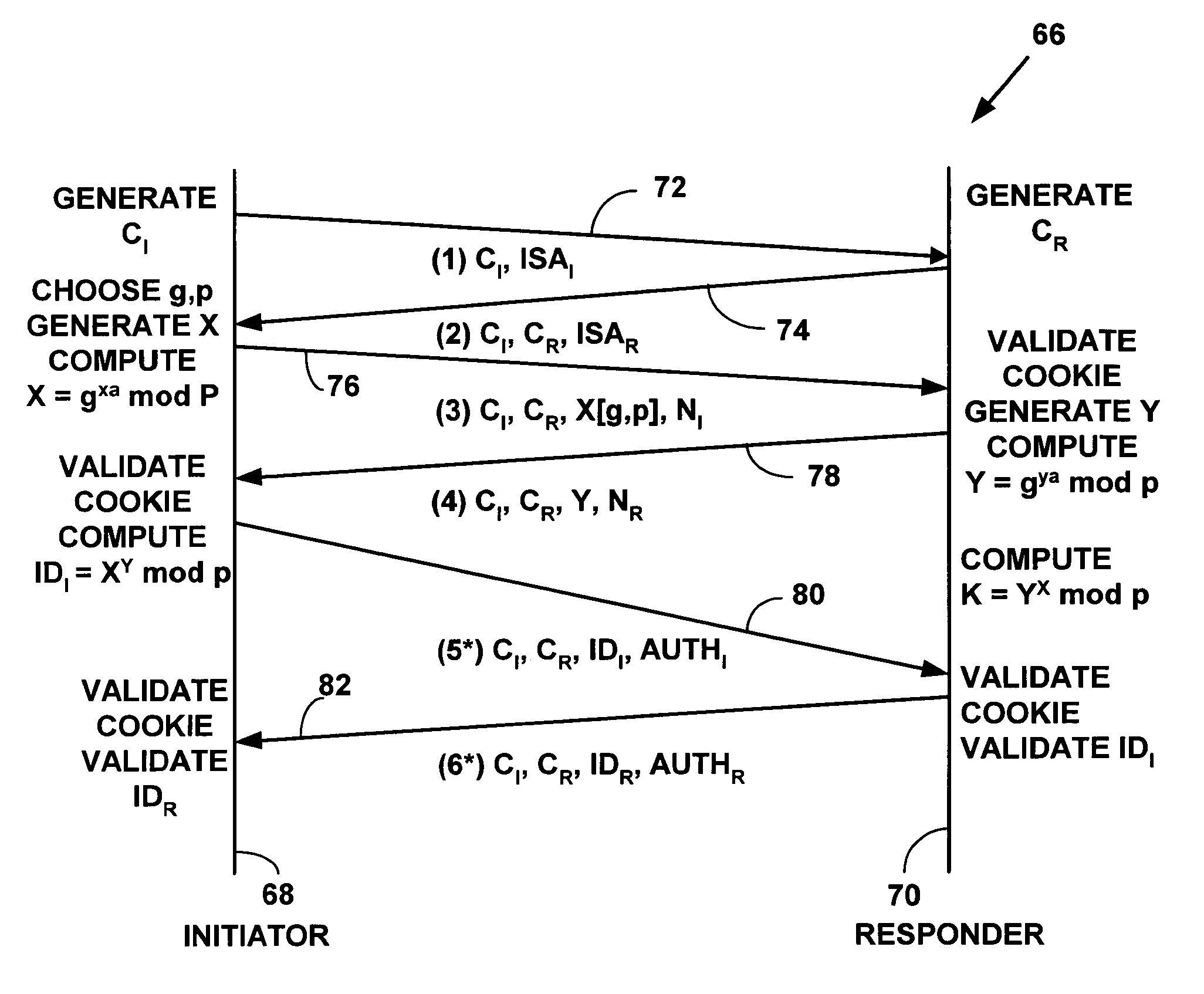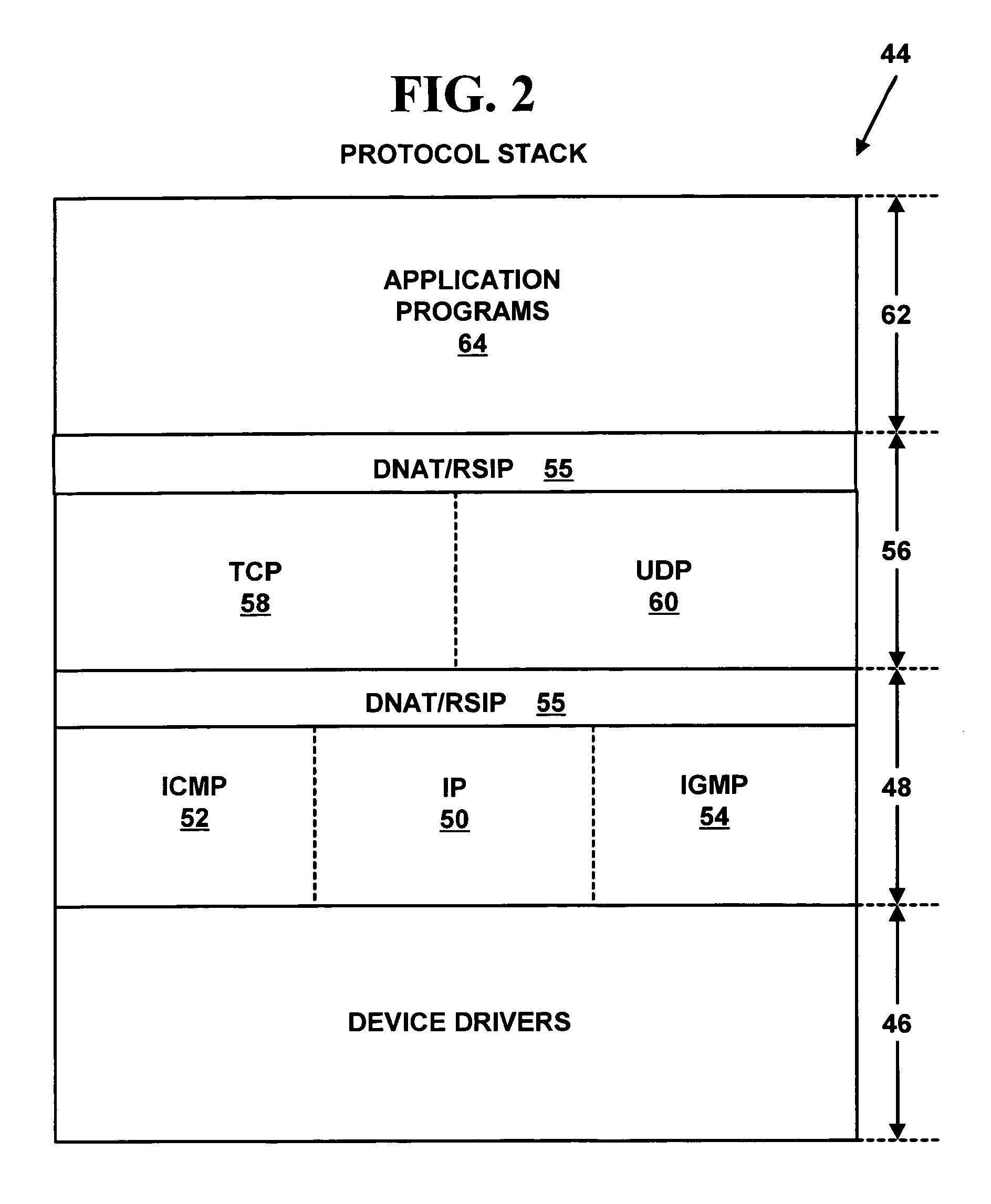Method and system for distributed generation of unique random numbers for digital tokens
a technology of unique random numbers and digital tokens, applied in the field of computer networks, can solve the problems of increasing the computational cost of type of address translation, increasing the cost of computation, and reducing the use of internet protocol addresses
- Summary
- Abstract
- Description
- Claims
- Application Information
AI Technical Summary
Benefits of technology
Problems solved by technology
Method used
Image
Examples
Embodiment Construction
[0038]Exemplary Network System FIG. 1 is a block diagram illustrating an exemplary network system 10 for one embodiment of the present invention. The network system 10 includes a first private computer network-x 12 with multiple network devices (14, 16, 18, 20, 22, 24) and a router 26 to route data packets to another external computer network. The router 26 may also function as a Distributed Network Address Translation (“DNAT”) or Realm Specific Internet Protocol (“RSIP”) gateway that includes security features as is explained below. As is known in the art, a “gateway” is a device that connects two networks using different communications protocols so that information can be passed from one to the other. A gateway both transfers information and converts it to a form compatible with the protocols used by a receiving network. The multiple network devices include any of computers (14, 18), printers 16, personal digital assistants 20, telephones 22 or other network devices not illustrate...
PUM
 Login to View More
Login to View More Abstract
Description
Claims
Application Information
 Login to View More
Login to View More - R&D
- Intellectual Property
- Life Sciences
- Materials
- Tech Scout
- Unparalleled Data Quality
- Higher Quality Content
- 60% Fewer Hallucinations
Browse by: Latest US Patents, China's latest patents, Technical Efficacy Thesaurus, Application Domain, Technology Topic, Popular Technical Reports.
© 2025 PatSnap. All rights reserved.Legal|Privacy policy|Modern Slavery Act Transparency Statement|Sitemap|About US| Contact US: help@patsnap.com



